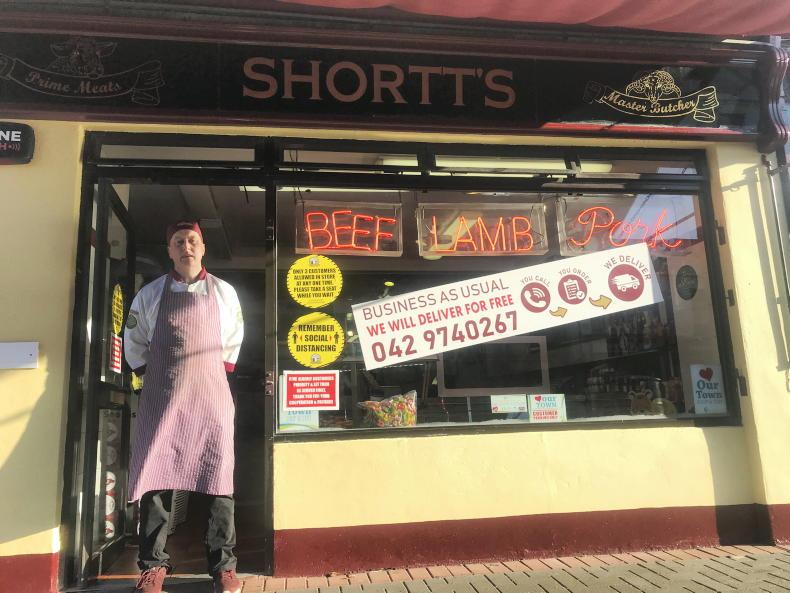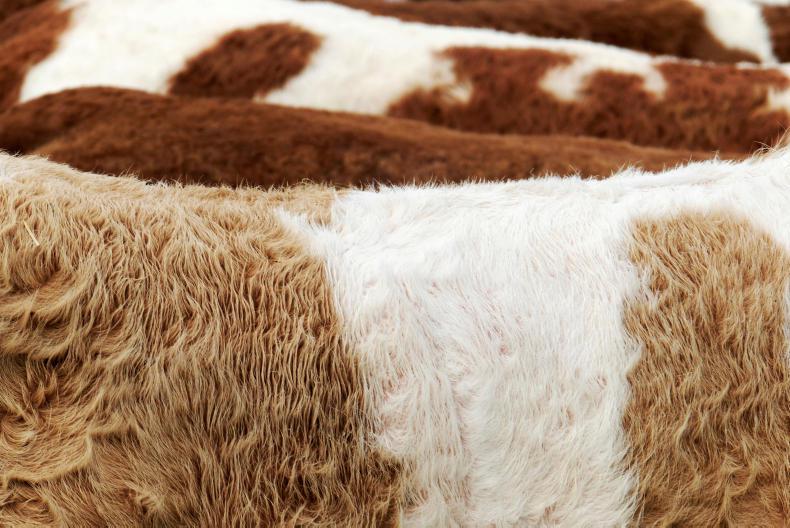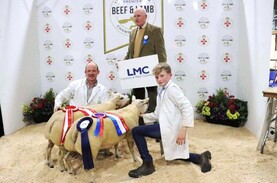Small abattoirs have incurred huge losses to their weekly income as a result of a crash in the value of cattle hides and sheep skins, the Irish Farmers Journal has been told.
The issue has been building gradually since 2015, with the Chinese market a primary destination for Irish cattle hides. In recent years, small processors in China have been closed as the government enforces stricter environmental controls.
Hides are the raw material for the leather industry and therefore exposed to fashion trends in clothing, footwear, cars and furniture. Leather is out of fashion in footwear, with a preference for synthetic materials at present and no great demand for leather jackets.
In the past, domestic furniture and the luxury car industry were both high-volume users of leather. In recent times, these industries have shown a preference for textile and synthetic alternatives. Lamb skins are used almost exclusively in fashion.
Factory prices
In factories, cattle hides have fallen to around €17 or €18 for prime cattle and below €5 for cows. This compares with close to €70 for prime cattle hides and almost €60 for cows at the top of the market two years ago.
Factories receive a greater price as they use a mechanical puller, leaving the hide intact. Small abattoirs cut the hide from the animal and in turn have a lower quality hide.
‘Small abattoirs are
terrified to invest’

Peter Gillivan and Son
Shane Maher, Main Street, Moate, Co Westmeath.
Shane Maher, Main Street, Moate, Co Westmeath – Peter Gillivan and Son
“Small abattoir owners are terrified to invest in their businesses. We don’t know if we’ll be operating in two years’ time so caution is used when considering investments into our infrastructure.
“At the start of the COVID-19 restrictions we noticed a great lift in trade. People liked the idea of the small local butcher with only two allowed into the shop at any given time.
“Since the start of September, we have seen a drop off in numbers. People are less afraid to go to large supermarkets. Shopping at your local butcher supports the local economy, the money stays within the town.
“County councils around the country have driven trade out of small towns. Parking spaces along main streets have been reduced and this has had a major negative effect on the butcher trade. As a result, people rather travel to large supermarkets with plenty of parking.
“When I took over here in Moate there were two other abattoirs along with myself operating on the main street. I’m the only one that is left. Getting paid for hides is history. Eighteen months ago I got €40 per animal. I haven’t received a penny for them since.”
‘You couldn’t give them away’

Wynne's Meats
Noel Wynne, Collooney, Co Sligo.
Noel Wynne, Collooney, Co Sligo – Wynne’s Meats
“There’s nothing much can be done about the difficulties small abattoirs face. There is absolutely no demand for hides or skins – you couldn’t give them away.
“We used to receive €250 a week for our hides and now we pay €250 to get rid of them. That’s a €500 difference our business has to deal with every week.
“Four of us work in the abattoir and we process 12 cattle and 50 lambs per week. There’s no comparison in the quality of meat we produce compared to a factory.
“We cut the hide off with a knife and this leaves fat on the meat. The mechanical puller in factories rips off the fat with the hide and takes a lot of the flavour with it.
“There is no future for this tradition, I started the business in 1978 and there were 20 other abattoirs in Sligo. For the past 10 years there have only been two in the whole county. Our business can keep going for the minute – but the costs wouldn’t want to get any worse.

Myles Family Butchers
Tommy Myles, Ardfinnan, Clonmel, Co Tipperary.
Myles Family Butchers - Tommy Myles, Ardfinnan, Clonmel, Co Tipperary
“The small abattoir and butcher trade is hanging on by a thread. It’s tough going for small abattoirs at the minute, with very poor offal trade and the rising costs of disposing of cattle hides.
“It’s mad what has happened to the hide trade in recent years. We are paying €300 per month to dispose of cattle hides, whereas in the past we were paid between €25 and €30 per hide. It costs €4 per hide for disposal.
“Sheep skin costs €15 per week to dispose of, whereas in the past we used to get up to €3 per skin. The cost of insurance for the abattoir has increased heavily. We pay €4,000 per year to insure two workers in the abattoir.
“On average, we process three cattle and 12 sheep peer week and sell all the meat in our adjoining butcher shop. We source all of our cattle within a 3km radius of the shop. We process local farmers’ cattle along with our own.
“The time will come where small abattoirs won’t be able to stay in business. All butchers will have to source their meat from factories if something isn’t done to help the small processors.
“Blacksmiths were very popular 70 years ago and look at how that way of life dwindled away.
“Small abattoir operators will follow down the same path if something isn’t done about insurance fees and the costs associated with hide and skin disposal.
“There is a lot of work goes into processing cattle and at the end of the day we expect to be paid for our efforts.”
‘No support for
businesses like ours’

Scotts Butchers
Keith Scott, Conabury, Castleblayney, Co Monaghan.
Keith Scott, Conabury, Castleblayney, Co Monaghan – Scotts Butchers
“The cost involved in running a small abattoir has increased in recent years.
“There are no grants, schemes, or any help from the Government to keep businesses like ours going. All the money spent on our facilities has been invested by my family.
“The hide and lamb skin market is non-existent. Having to pay for disposal has taken a hit on the business and is a dramatic contrast to recent times when we received €30 per hide.
“It’s a sign of changing trends, people are choosing synthetic materials over leather these days.
“Shoes, car seats, and jackets are rarely made from leather and this has been felt at the source by small abattoirs across the country.
“There is a lot of hidden expenses which many people aren’t aware of. Staff are trained to the highest standards. Everyone on the line has to have a licence.
“I sent one of the lads away for training in Dublin recently and it cost €350 for a full certification.
“We are over 90 years in business and one of only three family-owned abattoirs left in Co Monaghan. We contribute greatly to the local economy and offer people the option to buy homegrown meat.
“We kill eight cattle and 25 lambs per week in our abattoir adjoining the butcher shop. The meat is superior to a factory-killed animal as we allow the carcase to hang for 21 days before boning.
“The same farmers have supplied their cattle to us for generations and we want to continue this tradition for many years to come.”
‘We have the quality, they have the quantity’

Burke’s Butchers
Martin Burke, Castleconway, Killorglin, Co Kerry.
Martin Burke, Castleconway, Killorglin, Co Kerry – Burke’s Butchers
“The small family butchers have quality beef while the factories have large quantities. We kill 10 cattle per week and look for the light whiteheads and Herefords. The factory goes for the bulky continental animal for as much volume as possible. Our meat is hung for six weeks which gives much drier, mature, and flavoursome beef. There is no comparison in taste.
“Since the start of the COVID-19 restrictions we have noticed that trade has picked up a bit. People have been buying local and have been cooking at home more. Beef and lamb sales have increased the most.
“We hope people continue to choose their local butchers over supermarkets, there are a lot of costs involved in running a small butcher shop but that extra bit of effort is all worth it for the much tastier beef.”
Read more
Offal: what is the fifth quarter and do farmers get paid for it?
Value of cattle hides down by 40%
No joy in skin and hide trade
Small abattoirs have incurred huge losses to their weekly income as a result of a crash in the value of cattle hides and sheep skins, the Irish Farmers Journal has been told.
The issue has been building gradually since 2015, with the Chinese market a primary destination for Irish cattle hides. In recent years, small processors in China have been closed as the government enforces stricter environmental controls.
Hides are the raw material for the leather industry and therefore exposed to fashion trends in clothing, footwear, cars and furniture. Leather is out of fashion in footwear, with a preference for synthetic materials at present and no great demand for leather jackets.
In the past, domestic furniture and the luxury car industry were both high-volume users of leather. In recent times, these industries have shown a preference for textile and synthetic alternatives. Lamb skins are used almost exclusively in fashion.
Factory prices
In factories, cattle hides have fallen to around €17 or €18 for prime cattle and below €5 for cows. This compares with close to €70 for prime cattle hides and almost €60 for cows at the top of the market two years ago.
Factories receive a greater price as they use a mechanical puller, leaving the hide intact. Small abattoirs cut the hide from the animal and in turn have a lower quality hide.
‘Small abattoirs are
terrified to invest’

Peter Gillivan and Son
Shane Maher, Main Street, Moate, Co Westmeath.
Shane Maher, Main Street, Moate, Co Westmeath – Peter Gillivan and Son
“Small abattoir owners are terrified to invest in their businesses. We don’t know if we’ll be operating in two years’ time so caution is used when considering investments into our infrastructure.
“At the start of the COVID-19 restrictions we noticed a great lift in trade. People liked the idea of the small local butcher with only two allowed into the shop at any given time.
“Since the start of September, we have seen a drop off in numbers. People are less afraid to go to large supermarkets. Shopping at your local butcher supports the local economy, the money stays within the town.
“County councils around the country have driven trade out of small towns. Parking spaces along main streets have been reduced and this has had a major negative effect on the butcher trade. As a result, people rather travel to large supermarkets with plenty of parking.
“When I took over here in Moate there were two other abattoirs along with myself operating on the main street. I’m the only one that is left. Getting paid for hides is history. Eighteen months ago I got €40 per animal. I haven’t received a penny for them since.”
‘You couldn’t give them away’

Wynne's Meats
Noel Wynne, Collooney, Co Sligo.
Noel Wynne, Collooney, Co Sligo – Wynne’s Meats
“There’s nothing much can be done about the difficulties small abattoirs face. There is absolutely no demand for hides or skins – you couldn’t give them away.
“We used to receive €250 a week for our hides and now we pay €250 to get rid of them. That’s a €500 difference our business has to deal with every week.
“Four of us work in the abattoir and we process 12 cattle and 50 lambs per week. There’s no comparison in the quality of meat we produce compared to a factory.
“We cut the hide off with a knife and this leaves fat on the meat. The mechanical puller in factories rips off the fat with the hide and takes a lot of the flavour with it.
“There is no future for this tradition, I started the business in 1978 and there were 20 other abattoirs in Sligo. For the past 10 years there have only been two in the whole county. Our business can keep going for the minute – but the costs wouldn’t want to get any worse.

Myles Family Butchers
Tommy Myles, Ardfinnan, Clonmel, Co Tipperary.
Myles Family Butchers - Tommy Myles, Ardfinnan, Clonmel, Co Tipperary
“The small abattoir and butcher trade is hanging on by a thread. It’s tough going for small abattoirs at the minute, with very poor offal trade and the rising costs of disposing of cattle hides.
“It’s mad what has happened to the hide trade in recent years. We are paying €300 per month to dispose of cattle hides, whereas in the past we were paid between €25 and €30 per hide. It costs €4 per hide for disposal.
“Sheep skin costs €15 per week to dispose of, whereas in the past we used to get up to €3 per skin. The cost of insurance for the abattoir has increased heavily. We pay €4,000 per year to insure two workers in the abattoir.
“On average, we process three cattle and 12 sheep peer week and sell all the meat in our adjoining butcher shop. We source all of our cattle within a 3km radius of the shop. We process local farmers’ cattle along with our own.
“The time will come where small abattoirs won’t be able to stay in business. All butchers will have to source their meat from factories if something isn’t done to help the small processors.
“Blacksmiths were very popular 70 years ago and look at how that way of life dwindled away.
“Small abattoir operators will follow down the same path if something isn’t done about insurance fees and the costs associated with hide and skin disposal.
“There is a lot of work goes into processing cattle and at the end of the day we expect to be paid for our efforts.”
‘No support for
businesses like ours’

Scotts Butchers
Keith Scott, Conabury, Castleblayney, Co Monaghan.
Keith Scott, Conabury, Castleblayney, Co Monaghan – Scotts Butchers
“The cost involved in running a small abattoir has increased in recent years.
“There are no grants, schemes, or any help from the Government to keep businesses like ours going. All the money spent on our facilities has been invested by my family.
“The hide and lamb skin market is non-existent. Having to pay for disposal has taken a hit on the business and is a dramatic contrast to recent times when we received €30 per hide.
“It’s a sign of changing trends, people are choosing synthetic materials over leather these days.
“Shoes, car seats, and jackets are rarely made from leather and this has been felt at the source by small abattoirs across the country.
“There is a lot of hidden expenses which many people aren’t aware of. Staff are trained to the highest standards. Everyone on the line has to have a licence.
“I sent one of the lads away for training in Dublin recently and it cost €350 for a full certification.
“We are over 90 years in business and one of only three family-owned abattoirs left in Co Monaghan. We contribute greatly to the local economy and offer people the option to buy homegrown meat.
“We kill eight cattle and 25 lambs per week in our abattoir adjoining the butcher shop. The meat is superior to a factory-killed animal as we allow the carcase to hang for 21 days before boning.
“The same farmers have supplied their cattle to us for generations and we want to continue this tradition for many years to come.”
‘We have the quality, they have the quantity’

Burke’s Butchers
Martin Burke, Castleconway, Killorglin, Co Kerry.
Martin Burke, Castleconway, Killorglin, Co Kerry – Burke’s Butchers
“The small family butchers have quality beef while the factories have large quantities. We kill 10 cattle per week and look for the light whiteheads and Herefords. The factory goes for the bulky continental animal for as much volume as possible. Our meat is hung for six weeks which gives much drier, mature, and flavoursome beef. There is no comparison in taste.
“Since the start of the COVID-19 restrictions we have noticed that trade has picked up a bit. People have been buying local and have been cooking at home more. Beef and lamb sales have increased the most.
“We hope people continue to choose their local butchers over supermarkets, there are a lot of costs involved in running a small butcher shop but that extra bit of effort is all worth it for the much tastier beef.”
Read more
Offal: what is the fifth quarter and do farmers get paid for it?
Value of cattle hides down by 40%
No joy in skin and hide trade











 This is a subscriber-only article
This is a subscriber-only article










SHARING OPTIONS: